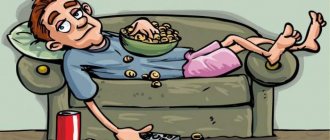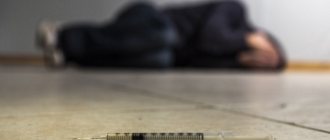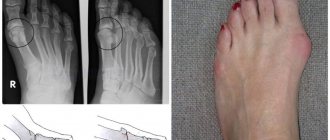Physical inactivity is a pathological condition in which, due to low physical activity, muscle strength decreases and muscle atrophy occurs. Physical inactivity is not a disease. It is considered a risk factor that provokes the development of diseases of all systems and organs, but primarily the heart, blood vessels and musculoskeletal system.
We will talk about the causes of physical inactivity, consequences and comprehensive restoration of the body, including osteopathic methods.
Causes of physical inactivity
Despite the global promotion of an active lifestyle and the cult of the body, according to WHO, at least a quarter of the world's population suffers from physical inactivity. Pathology ranks fourth in the list of causes of early mortality from cardiovascular diseases.
The main reason for physical inactivity is urbanization and a sedentary lifestyle, hence its fair name - “a disease of civilization.”
The main risk factors that predetermine the development of physical inactivity:
- prolonged inactivity after a serious illness or surgery;
- specific work that forces a person to spend the working day in a sitting or standing position. With the transition to remote work during the pandemic, the situation did not get better;
- due to fatigue, muscle and back pain caused by forced body position, people refuse to play sports;
- personal transport leaves many people no chance to walk even short distances;
- obesity can be both a cause and a consequence of physical inactivity;
- passion for social networks and computer games among adults and children. According to statistics, about 80% of teenagers remain indifferent to sports for this reason.
People work five days a week, and on weekends they try to sleep and relax on the couch, but rest does not bring relief. Today you don’t even need to go to the store; any food and non-food products are brought home, which further aggravates the pathological condition.
Physical inactivity: symptoms, its consequences and prevention
Regular physical activity is necessary for all people, regardless of age and gender. Systematic training strengthens the muscular system, including the myocardium, prevents congestion in the lungs, and improves blood circulation in the vessels. People who exercise regularly have good memory, high performance and good immune status.
Physical inactivity is one of the most pressing problems in the modern world. The disease called by this term does not exist in medicine, but this condition can lead to disruption of the functions of many organs and systems. That is why doctors around the world are paying more and more attention to physical inactivity among the population every year. It’s not difficult to guess the meaning of this term; “hypodynamia” means “reduced activity.”
Prevention of physical inactivity
The main reason for physical inactivity in people in the modern world is obvious. Achievements of technological progress make human life more comfortable, but few people think that a decrease in physical activity, for example, when using a personal car, has a negative impact on health. In addition, physical inactivity is a constant companion for people in so-called sedentary professions (programmers, managers, etc.).
This problem does not bypass children, especially of school age, who after classes (during which they also sit) prefer to spend their free time at home on the computer rather than on the street. Of course, there are reasons why a person is forced to limit his movement, for example, due to serious illness or as a result of injury. But even in such cases, patients need movement. It’s not for nothing that ancient healers said: “Movement is life.”
Symptoms of physical inactivity
Physical inactivity is a condition that is accompanied by a huge number of symptoms, most of which are a consequence of insufficient physical activity. The following main symptoms can be identified: lethargy, drowsiness; bad mood, irritability; general malaise, fatigue; decreased appetite; sleep disturbance, decreased performance.
Almost every person can periodically feel such symptoms, but few people associate them with physical inactivity. Therefore, when such signs appear, you should think about whether you are devoting enough time to physical training. A long-term decrease in physical activity leads to atrophic changes in muscles and bone tissue, metabolism is disrupted, and protein synthesis decreases. Physical inactivity has an extremely adverse effect on the functioning of the brain, causing headaches, insomnia, and people becoming emotionally unbalanced. Another sign of physical inactivity is an increase in appetite, which results in an increase in the amount of food consumed.
Reduced physical activity and excessive nutrition can quickly lead to the development of obesity, which contributes to the occurrence of lipid metabolism disorders and atherosclerosis. It is known that the presence of atherosclerosis significantly increases the risk of cardiovascular diseases. This is also facilitated by increased fragility of blood vessels, which is also a consequence of metabolic disorders.
Considerable attention should be paid to physical activity in children, especially of school age. When sitting at a desk for a long time, blood stagnates in the vessels of the lower extremities, which leads to depletion of the blood supply to other organs, including the brain. As a result, thought processes, memory and concentration deteriorate. In addition, sedentary children have a weak muscular system. Due to the weakness of the back muscles, they develop poor posture. As we see, the consequences of physical inactivity can be expressed in dysfunction of many organs and systems, and often such disorders are associated with low physical activity in the last place, although in fact this is not the case.
Prevention of physical inactivity
Obviously, prevention measures should be aimed at increasing physical activity in each person. Children need to be taught from early childhood to do daily morning exercises, active games in the fresh air, compulsory attendance at physical education classes at school, and attendance at sports sections is very useful.
Recently, sports centers and fitness clubs have become widespread, regular visits to which are an excellent prevention of physical inactivity. However, the inability to attend sports centers should not be the reason for insufficient physical activity. Every person can take daily walks and jogs in the fresh air. In addition, it is useful to have any exercise machine at home, not necessarily expensive and large; in every home there is a place for a simple jump rope, expander or dumbbells.
The problem of excess weight. Causes and prevention of human overweight
Obesity is a relatively “young” disease that appeared and became widespread in the middle of the 20th century. The reason for this is the notorious sedentary lifestyle and the “fast food” culture that originated in the USA. Today, according to the World Health Organization (WHO), about 1.5 billion people worldwide suffer from excess weight problems. The leaders are the USA and Europe; in Russia, every fourth person is overweight. In some countries, the problems of overweight and obesity are being addressed at the state level, but so far little success has been achieved. Thus, the fight against excess weight is the task of each individual person.
How to determine if you are overweight?
Where should you start the process of fighting excess weight? Of course, from an attempt to determine its presence. It would be wrong to do this “by eye”, since often the conclusion about the presence of excess weight is premature. This is due to the standards that are imposed on us by modern mass culture. The obsession with fighting non-existent “excess weight” leads to various diseases, for example, anorexia and/or bulimia. The reasons for such sad consequences: abuse of numerous “magic remedies”, dietary supplements and unbalanced diets. In Russia, excess body weight is generally rarely considered as a problem that should be addressed to doctors. This makes the problem even worse.
To determine excess weight, there is an indicator called body mass index (BMI). To calculate BMI, you need to divide your weight (in kilograms) by your height squared (in meters). If your BMI is between 19 and 25, then you have no problems with being overweight. A BMI of 25 to 30 means overweight, 30 or more means obese.
Causes of excess weight
Obesity is usually divided into primary and symptomatic, when excess weight is a symptom of another disease. The causes of primary excess weight are: genetic predisposition, excess food consumption and lack of physical activity. As for heredity, scientists agree that there is a greater or lesser genetic predisposition to weight gain, but hereditary factors are always realized in close connection with a person’s lifestyle. Before “blaming genetics”, it should be noted that most often family eating habits, which are passed on from generation to generation, still have a greater influence. And habits are something we can change. The same goes for a sedentary lifestyle. The conclusion is simple: everything is in your hands. However, you should not fight excess weight on your own. It is better to entrust the matter to professionals.
Some medications can also cause increased body fat. These include corticosteroids, female hormonal drugs, antidepressants, etc. These drugs should always be taken as prescribed and under the supervision of the attending physician.
Excess weight can be the result of certain pathological conditions, such as dysfunction of the thyroid gland or pituitary gland, underdevelopment of the gonads, Cushing's disease, and damage to the nerve cells of the hypothalamus.
Consequences of excess weight
Excess weight often causes disruption of many body functions. First of all, being overweight increases the risk of cardiovascular disease. Excess body weight has a negative impact on the musculoskeletal system, causing foot deformity, osteoarthritis of large joints and other disorders. Also, excess weight leads to various metabolic disorders, which can result in the development of atherosclerosis and diabetes.
Prevention of excess weight
People who tend to be overweight should balance the amount of food consumed and the level of physical activity. The diet should be balanced. An increase in physical activity and sports should follow a change in diet. It is important to understand what exactly was the main factor in your weight gain - a change in diet or a decrease in physical activity. Then you can find the optimal solution that will be ideal for you. Another indispensable element of prevention, which is often forgotten, is regular examinations and tests. Such measures will help to identify and solve the problem at the earliest stages of its occurrence.
Tests for excess weight
glycated hemoglobin, blood glucose, prolactin, thyroid-stimulating hormone, triglycerides, lipid status assessment, cortisol, leptin.
Dear TV viewers, physical inactivity and excess weight are problems that should be dealt with from the very first signs of their manifestation, in order not to bring the matter to a visit to the doctor. Meanwhile, a regular medical examination will not be superfluous and will help to identify at the early stages all the signs that in the future can lead to excess weight and related problems.
The article was prepared by: I.S. Burlakova, doctor of the primary care unit of the State Healthcare Institution
What happens to the body during physical inactivity?
Human muscles must contract, which is facilitated by physical activity. Ideally, this is at least 2.5 hours a week of aerobic (cardio) exercise and 1.5 hours of strength training.
If a person moves little, his muscular strength decreases and the conductivity of neuromuscular impulses deteriorates, that is, the muscle fibers practically stop contracting.
Hence the main danger of physical inactivity - consequences that sooner or later make themselves known, and well, if not all at once:
Among the severe consequences of physical inactivity are heart failure, heart attacks, osteoporosis, osteoarthritis, that is, degenerative changes in bones and joints. Thus, not only a person’s quality of life decreases, but also its duration.
Causes and risk factors
Physical inactivity can be caused by objective reasons, for example, disability, severe and long-term illness. But in most cases it is associated with improper lifestyle organization or sedentary work. The main risk factors for the development of physical inactivity include:
- insufficient physical activity;
- excess body weight;
- psychological disorders;
- somatic diseases;
- genetic factors;
- intrauterine fetal hypoxia;
- birth injuries;
- bad habits.
Treatment of physical inactivity
After conducting an orthostatic load test with squats, any experienced therapist is able to diagnose physical inactivity. The consequences of the pathological condition are determined using ECG, echocardiography, CT and blood biochemistry.
Drug therapy is prescribed when serious complications in the heart, blood vessels, and other systems and organs are detected.
For the treatment of physical inactivity the following are used:
Treatment of physical inactivity by an osteopath significantly speeds up the rehabilitation process and increases its effectiveness. Osteopathic correction will not be superfluous in the initial stage of pathology and is indispensable in the development of diseases of the musculoskeletal system.
Physical inactivity - what is it?
Physical inactivity is a condition characterized by insufficient physical activity and decreased muscle strength. It is not an independent disease. The main symptoms of physical inactivity: constant fatigue and decreased performance, excess weight, insomnia and emotional lability. Diagnosis is based on medical history and objective examination; laboratory and instrumental methods are used to identify concomitant pathologies. Treatment consists of gradually increasing the volume of physical activity and eliminating the etiological factors of physical inactivity. If there are indications, drug correction is carried out.
How does an osteopath treat physical inactivity?
Low motor activity is almost always accompanied by spinal diseases, and this is a direct indication for osteopathic treatment. Pain in the back and joints goes away, posture improves, the load is removed from the diaphragm and shortness of breath goes away.
An osteopath works with all systems and organs of the patient, so after 2-3 sessions, constipation is eliminated, and the frequency of crises in hypertensive patients is noticeably reduced.
Using gentle manual techniques, the osteopath stimulates muscle activity and the conduction of nerve impulses, that is, it affects the area most vulnerable to physical inactivity. The elasticity of muscle fibers and their contractile activity increases. Developed muscles receive signals to activity and readily respond to them. Therefore, it becomes much easier for a person to perform physical exercises that are unusual for the body and the general state of health is restored faster.
Features of the course in children
In children and adolescents, it develops due to limited mobility at school and at home.
When a child spends most of the day at school, stagnation of blood and lymph occurs in the lower extremities, but the brain and other organs are less well supplied with blood. Oxygen starvation occurs, attention, memory, ability to think and concentrate deteriorate.
Weakness of the muscular frame, especially the anti-gravity muscles of the back, provokes poor posture and curvature of the spine.
In children, an inactive lifestyle leads to the development of diseases much faster, because their skeleton and muscular system are not yet fully formed and do not have a sufficient reserve of resistance.
What are the dangers of body immobility and physical inactivity?
- Since there is no physical activity, the patient’s muscles begin to flabby, weaken, and their elasticity and firmness are lost. This condition is dangerous due to the development of atrophy.
- The patient's strength and endurance decrease, and pathologies of the nervous system are observed (nervous disorders, depression).
- A prolonged course of the disease threatens the development of osteoporosis, as the bones stop absorbing calcium. Pathology can cause the development of osteoarthritis, as well as osteochondrosis.
- Passivity is a direct path to the development of cardiac pathologies (coronary disease, hypertension, arrhythmia).
- The functionality of the respiratory system is impaired, which leads to congestion and obstruction.
- The pathology provokes a malfunction of the digestive system - intestinal motility is disrupted, constipation and colitis appear.
All of the above negative conditions lead to a decrease in the patient’s life expectancy.











